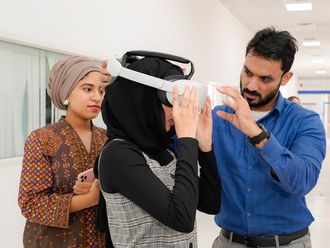
Dubai:
The UAE Ministry of Health and Prevention will introduce a new medicine for Type 2 diabetes which will be administered through a small titanium device the size of a matchstick that will be placed under the skin to dispense a daily dose for the diabetes patient for up to six months. The device will be available within the next 3 months.
Current data explains how similar class of medicines approved by the Food and Drug Administration in the US work: Type II diabetics tend to eat a little more than normal due to an impairment in the production of Glucagon Like Peptide I (GLP 1), a hormone produced in the small intestine which sends the signal of fullness to the brain and also sends a signal for the pancreas to release insulin after a meal. However, in diabetics, the small intestine does not produce enough GLP I and there is a delayed signal of satiety resulting in obesity which in turn leads to diabetes.
These class of medicines release GLP I for six months as per the patient’s requirement so that he eats less and thereby has better blood sugar control. But the patient will require to take his regular medication or insulin injection along with it.
Over the last decade, pharmaceutical firms have come out with earlier versions of GLP I. The first came out 10-15 years ago under the brand name Byetta and contained a version of GLP I called Exenatide which was required to be taken twice daily. Five years ago, another version was produced under the brand name Victoza containing Liraglutide was introduced that was required to be taken once daily. In 2014. The GLP I Dulaglutide was marketed under the name of Trulicity which was required to be taken once a week. Now, the new medicine will be required to be taken once in six months.
In a US study conducted on this type of medicine, Dr Robert Henry, MD, professor of medicine at UC, San Diego, who led the 2013 study and participated in the new research explained: “The pump delivers Exenatide 24 hours a day, seven days a week. That means the drug can continually activate receptors on the cells in the pancreas that release insulin [the hormone that tells cells to absorb glucose from the bloodstream]. In contrast, other oral and injectable drugs have peaks and valleys.”
It has also been established that GLP I, which is administered in a maximum dosage of 1.8 miligrams for diabetics, has also been approved to be given up to 3 miligrams to people who are morbidly obese.
In the UAE, where 19.3 per cent suffer from diabetes and 36 per cent of people are overweight and more than 39 per cent of the population is on borderline obesity, the new medicine might prove to the panacea for the rising diabesity epidemic.
The new medicine is not for Type 1 diabetics.












